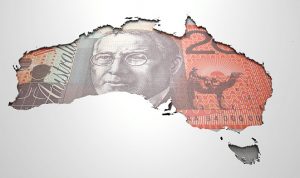There seems little certainty about Argentina upon which to build a monthly column, but I am prepared to stick my neck out and say the next president of the country is going to be Alberto Fernández.
It also looks likely that the finance minister will be Guillermo Nielsen.
Nielsen declined an interview with Euromoney, but, to be honest, he has said plenty – either directly or in selective retweets (even if they are not technically endorsement, as the phrase goes, here they do seem to illustrate a level of agreement).
So I decided to road test likely economic and financial policy under the coming administration with a range of economists, bankers and analysts.
Nielsen has outlined a 12-point plan for the economy, but in his multiple references to the Néstor Kirchner administration (2003-2007) that followed the 2001 crisis as his template, I think we can take the following as the leading two planks of the next government’s attempt to deal with the dire situation it will inherit.
Debt write-off
The first is a large debt write-off. The first Néstor administration got the private sector to take a haircut of about 65% on outstanding bonds.
This time, the IMF has put even more of its money into the country. As the IMF doesn’t really ‘do’ debt write-offs – it will only be open to negotiate re-profiling instead – this would point to the private sector taking a large haircut.
Capital Economics’ Argentina economist Edward Glossop says he expects around 40%, with the important caveat that any further devaluation and deterioration in the debt profile could see that increase even further.
Given the size of the debt – central government debt is approaching 100% of GDP, and if you add in the provincial debt that takes you to around 105% today – it is perhaps surprising that some still think re-profiling, rather than write-down, should also apply to private-sector debt.
Proponents of this approach use various arguments: they say about 35 percentage points of private-sector debt is held by the public sector – and therefore doesn’t create rollover risk and shouldn’t be included in the debt profile when thinking about sustainability.
Hand in hand: Alberto Fernández alongside Cristina Fernández de Kirchner
They also say debt has only reached this high ratio because of the sharp decline in the currency – and that it has over-corrected and this should account for roughly another 10 percentage points of debt that can be ‘taken out’ of the equation.
On both of these points, I am inclined to agree with Todd Martinez, director, Latin America Sovereigns at Fitch Ratings.
He tells me that this public-sector debt point is erroneous. Other emerging-market countries that also have public-sector institutions, such as Ukraine, Pakistan and Ecuador, don’t caveat this debt out of this leading ratio.
And while rollover risk is lower, simply disregarding this debt is problematic for a number of reasons, such as that it creates holes in the balance sheets of public-sector banks.
Martinez similarly isn’t persuaded by the currency overshoot argument, saying he takes the other side of this argument: if debt-to-GDP is so sensitive to currency devaluation, then that is a very large weakness and problem for debt sustainability. Add to this the fact that inflation is very high and the likelihood is the currency will continue to devalue.
So on balance, it would seem that the government will pursue an aggressive debt-write-off. Arguably, it should, if it is to get to a sustainable position, assuming this isn’t just a liquidity problem, as some analysts believe.
Nielsen’s retweeting of an argument that promising not to interrupt payments during denial is an incentive to prolong it.
And his constant criticism of the level of debt taken out by the Mauricio Macri administration – and even a retweet of a message that described IMF policy in Argentina as a “scam” – suggests we can expect an aggressive posture from the new administration.
The market clearly agrees, with Argentina sovereign debt trading around 40 cents on the dollar.
Exports
While I think Nielsen’s likely approach to debt could be successful, the other main plank – increasing dollar-denominated revenues through exports, with the Vaca Muerta shale formation assigned to the cash-cow equivalent to the Néstor administration’s dollar-revenue boost from an agricultural commodity boom – is much more challenging.
Nielsen seems to believe that the private sector can be incentivized to bring in the huge investment needed to get this energy flowing. The government won’t be in a position to lead on the necessary capital investment.
He talks about cutting income tax in the sector to 20%. Here there is more consensus among the people I spoke to: there would need to be more widespread reform – labour laws for example, a third-rail issue that Macri dared not touch – and more trust in the new government’s respect for rules.
But the likely return of Axel Kicillof – the man who expropriated energy firm YPF – to a leading position in Argentine political life and the presence of Cristina Fernández de Kirchner as deputy president won’t help the new administration’s credibility.
There are plenty of other issues too: the suggestion that inflation can be tackled by a social compact that will see everyone acting in concert to lower inflation while keeping low real interest rates is probably the most ambitious aspect of Nielsen’s expected policy agenda.
There is much to be seen in the way of detail, but from the broad strokes of expected policy there is little room for optimism or confidence – other than that the next president is unlikely to face a real crisis.
However, replicating the 8% GDP growth rates of that Néstor administration is, sadly, fanciful.
NOTE: Do you want to trade at forex professionally? trade with the help of our forex robot developed by our programmers.
Signal2forex reviews


 Signal2forex.com - Best Forex robots and signals
Signal2forex.com - Best Forex robots and signals




